Vessel Traffic Services (VTS) & Automatic Identification Systems (AIS)-(RAIS)
TechnoKontrol Global Vessel Traffic Services (VTS) & Automatic Identification Systems (AIS)
Vessel Traffic Service (VTS) & Automatic Identification System (AIS).
General Information:
Vessel Traffic Service (VTS) – a service designed to improve vessel traffic safety and efficiency and to protect precious cargoes, human lives and the environment. Also offering the potential to respond appropriately to traffic situations emerging in an area including toll services, traffic control, security, safety, etc.
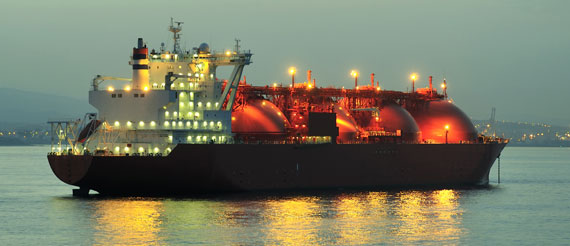
Recent years have seen a dramatic increase in the focus on vessel traffic safety in EU member states and various regions worldwide. The primary purpose of the original port use of VTS technology was designed and created to prevent vessel collisions and groundings in the port and entrance areas. The attitude towards the scope of a VTS has been widened to give it a key role in the environmental protection sector in the event of any kind of river/maritime accidents.
VTS coverage is expanding, see Worldvtsguide.org to include coastal areas, shipping channels, rivers and sensitive offshore areas.
In Europe, implementation of the Automatic Identification System (AIS) and the EU vessel information system ‘SafeSeaNet’ supplies the VTS with detailed data on vessels, such as their identification, movements and any dangerous cargoes. A notable trend among some VTS authorities is the desire to include port security, offshore surveillance and waterway surveillance in rivers and canals in VTS duties.
This desire brings in other stake holders from outside the VTS operation like police, customs, military, Search & Rescue Centres and other harbour authorities along the navigation routes but also ad hoc events like dredging operations, construction and maintenance operations along the navigation route, special transports or emergencies like a drifting ship losing engine power or drifting debree.
AIS substantially increases the situational awareness, the efficiency, the safety and decrease the workload for those authorities tasked with monitoring and controlling the navigation routes.

Important Factors to Consider:
The development of a new VTS must be built on past experiences, the good and the bad, always prevailing rules, guidelines and recommendations, available technologies and in depth insight into any or on going studies and projects relating to this safety sector to prepare the VTS infrastructure project to meet tomorrow’s demands.
The total concept represents the major challenge in projecting a new VTS. The complexity involved in coordinating the various activities is frequently underestimated:
- What are the customer’s demands and expectations (which often vary within an organisation)
- ow can they be met in terms of the legal framework and international recommendations.
- Should the VTS centre handle vessel traffic only or the “Command Centre/HQ”, becoming a Vessel Traffic Management and Information Services (VTMIS) or should the centre be a combined VTS and Maritime Rescue Coordination Centre (MRCC)
Prior to any final decision to project a new VTS, analyses and assessments must be completed to identify whether traffic volume or risks justify these services.
Depending on available expertise, the VTS project team would be wise to use – fully or selectively – the IALA recommendations as guidelines, see: IALA-AISM Publications

Creating Nautical Specifications:
The next step is to create a nautical specification in consultation with the agency in charge and operators in the area, such as ports, pilots and ship operators.
Delineate the geographical target area and define the areas in which intensive traffic monitoring is required. Consider whether a ship routing system or ship reporting points have to be established. Consider if and where speed limits should be introduced and enforced.
Decide what kind of monitoring equipment will best meet the demands. The location and size of the VTS centre has to be agreed upon. How many VTS operators are needed to perform daily operations? The nautical specification must also present basic cost estimates. Subsequently, a number of activities will gradually commence and sometimes progress simultaneously in accordance with a set time schedule.
Design and construct the VTS centre to offer effective and healthy working conditions. A sensible measure is to build an extra working station for training and replay purposes. Separate equipment facilities are essential in ensuring a low noise level in the VTS centre, with minimum interruptions during service and repair periods. Emergency power sources, such as UPS and Diesel or fuel-cell power generators, are essential.


Technical Specifications:
The technical specification represents the most comprehensive part of the documentation. There are several competitive suppliers of VTS equipment offering proprietary software design and performance. In addition to general requirements, the emphasis on the technical specifications must be in line with the specific requirements for a particular VTS in a bid to provide the purchaser with guidelines in choosing the optimal supplier with the best price. This is one of Technokontrol’s areas of expertise.
A specific and important feature of the specification is the communication equipment: telephones, VHF (Very High Frequency Marine Band) radios and IT (Information Technology). As the VTS will not function without communication, full redundancy is essential. It is also necessary to assess the VHF coverage of the VTS area and, if required, build new VHF stations.
It is crucial to commence a VTS project with the installation of AIS shore stations, as vessels above BRT 300 must be equipped with a transponder. To monitor traffic in large geographic areas, an AIS net must be in place. Radars should be used in areas where constant, intensive monitoring is required. Full traffic image security requires radar redundancy, which means overlapping coverage of two radars for the same area.
Cameras are sometimes the best traffic-monitoring tools in narrow channels, danger spots or inner port areas. The data-processing equipment consists of computers with vessel tracking facilities that combine radar images, transponder information, camera images, and radio direction-finder bearings that are merged to form an overall traffic scenario presented on the VTS operators workstation monitors in an electronic chart format.
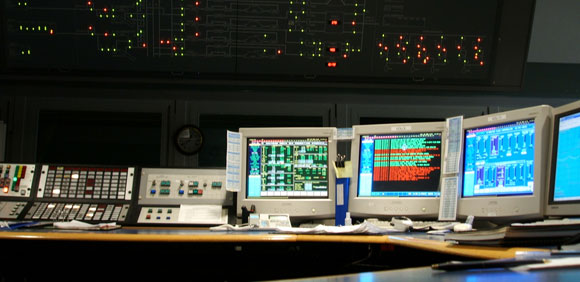
The AIS shore station connected to a high speed data network (like broadband optical fibre network) not only allows for direct radio contact between the VTS operator and the shipping traffic along the entire navigation route but also allows for remote control and maintenance of the network of the AIS shore stations and the computers involved and when a broadband networks is available, the VTS operator can also receive real time high resolution CCVT images from HD observation camera’s installed along the navigation route.
Once an optical broadband fiber network is available along the navigation route wireless IP services could be offered at competitive costs compared to satellite services. A two tire optical fibre network that connects the shore stations with the VTS is the most redundant and secures solution available.
The VTS must also provide vessels with information about current weather forecasts. Depending on local conditions, information on water levels and currents may also be of major significance. Providing this information for local areas may require the setting up of weather stations or publish third party weather data published and distributed via the VTS to its customers.
To receive an up-to-date mapping of the water level along the navigation route it is possible to make use of real time sonar data from ships along the route.
All verbal communications and traffic movements must be recorded and saved to allow reconstruction of historical traffic situations and evaluation and training programs.
Operating procedures must be established based on the VTS level-information, navigation assistance or traffic organisation. Detailed manuals and checklists are key resources in round-the-clock operations. Similar routines must be observed by all VTS operators and service users must always gain the same type of response.


Personnel, employee training regulations/qualifications/experience: The VTS organisation must have technicians on call at all times. Technicians must have a solid background in radar/telecom/ electronics/computers. Technicians are preferably recruited from within the organisation or from an external company or in the form of support from the supplier of the VTS processing equipment. In the learning process it is essential that the technicians are part of the installation team. The contract with the equipment supplier should include a paragraph covering at least two weeks training for the equipment technicians, plus 24-hour telephone support during the first year of operation.
ABOUT THE ORGANISATION ENQUIRIES
In addition to VTS operators, the organisation should have a dedicated VTS manager with in-depth expertise in VTS operations. Depending on the VTS size and number of operators, shift supervisors may also be required. Using radio communication, the VTS operators must be able to create a reassuring relationship with the service users.
The theoretical background and training level for operators vary among VTS units, ranging from pilots to operators without any nautical background. IALA has issued a manual on VTS personnel training that should be used in the training process.
Since 2004, for example, Sweden, the country where AIS originated, has adopted new recruiting and training criteria for VTS operators, which are gradually coming into force. A new employee must have completed a master mariner academic program, but no further experience is required. As part-time students at a maritime academy, existing operators without a master’s education are offered an educational program that consists of 60 per cent of a master’s program, but which specialises in subjects that could prove vital for a VTS operator. In addition, all operators have to pass a two-week in-house training course, with both internal and external lecturers, to receive a VTS operator’s certificate in line with IALA standards.

This course is followed by one-week of simulator training with the highest international supervision. A four-to-six week on-the-job-training course at the local VTS is also a part of the program. In conjunction with the installation of new VTS processing equipment, operators must at least attend a one-week specific training course in handling the equipment.
The installation of a new VTS represents a change in operating procedures and involves a major long-term investment. To achieve optimal results, funds must be available from the start of the project including a time table and a 10 year investment program to achieve the set objectives. Continual economic revision must be performed during the project process to ensure that the project progresses within the budget limits.
A VTS is an official approach to improving vessel traffic safety and efficiency and protecting the environment, but during the planning of a new VTS, it has to be kept in mind that it must provide a service to the maritime industry. Especially when ship operators are going to pay a navigation fee for their passage.
INSTALLATION & APPLICATION OF THESE SAFETY AND VESSEL TRAFFIC TECHNOLOGIES
Any project requires a phased approach involving all stakeholders and operators in regard of the project but also a solid inventory scan, analyses and visual inspection of the navigation route to determine the best spots to locate the AIS shore stations, to determine the bottle necks in the navigation route that should be handled with priority. We regard this inventory scan will be initiated at Phase 1. Of any project.
Phase 1: The VST "Command and Control Center/HQ":
The VST will be located at the "Control and Command Center/HQ" for the entire navigation route, normally in capitals, shipping hubs, ports, etc. At this "Command" location the received "IAS" data is turned into a visual screen presentations for easy and effective understanding and use.
The digital maps systems have to be adapted, up-graded and a radar overlay involving the necessary IT integration has to be performed. This is one of the first jobs at hand.
The moment the VTS is operational on a local level shipping traffic can be charged for VST services. We can estimate the necessary investment to manage an "AIS" over navigation routes, presenting real time CCVT data, AIS data, communication, computers, monitors, working stations and a separate IT centre.

Phase 2: The AIS Shore stations:
The limiting aspect of VHF communication, voice and data is determined by the limited reach of the VHF signal. As a general rule we have to place a shore station every 20km-40 km along the river shore. However, dense traffic, but also geological situations like hills, mountains and tropical forests affect the reach and capacity of the shore stations and it is possible that we need a higher density of shore stations to create a redundant AIS system. Because water levels in the river, nautical routes, harbours may vary by several meters during the seasonal cycles with extremes in low and high water levels we propose to elevate the shore stations and in doing so also elevate the VHF and DGPS antennae.
As a result we will increase the quality of the transmission signals. Although the shore stations are fully automated manning the stations could be considered. This requires personnel accommodation. We recommend to deliver a pre-fabricated concrete building on a tower mount containing all the necessary equipment and personnel pre-fabricated accommodation but fabricated and installed by Technokontrol Homes.
Each shore station or sub-station of the network will have double and emergency back-up equipment, climate control and power backup, AIS receiver/transmitter, DGPS transmitter and two CCVT camera’s including two VHF antennae and a DGPS Antenna as well as a fibre modem including the node. We do include the connection of all the stations, sub-stations, shore stations to the electricity grid if the client wishes as well of having/offering other available energy/power options which will be explained shortly.
Each station, sub-station, shore station, will also have incorporated a pre-fabricated 60 square metres home/base for at least one or two operators/observes, which can live at the location for periods of time or be present on daily, weekly, monthly shifts. These operators will use the lounge area as their "Operations/Data Centre". As these bases/housing are pre-fabricated in several hours by “Technokontrol Homes”, they will be totally installed and operational in less than a day.
These operational bases/stations will also have independent power/energy supplies by means of solar panels and of an extra auxiliary &/or a principal electricity power unit powered by a low-consumption diesel generator with its own anti-explosion, anti-fire, anti-thermal protection in its fuel storage/deposits this creating a fully auto-sufficient station, sub-station, shore station inside and being part of the telecommunications network with the other stations and the " Command and Control Centre/HQ".

Command Centre building/HQ-National AIS/VTS Head Quarters

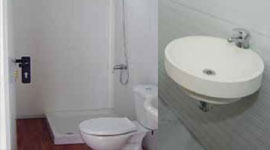
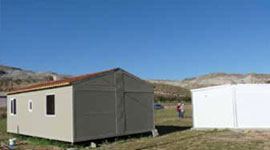
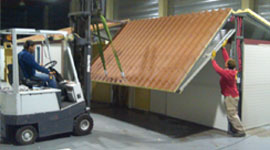
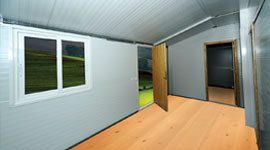
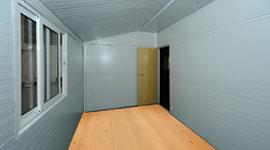
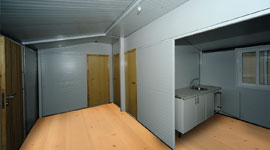
View: "Base stations, sub-stations, shore-stations connected with the Command Centre/HQ", personnel living quarters and work place.
Optical Fibre Network versus Satellite technology:
We also offer an "ultra-fast optical fibre network" to connect all stations, sub-stations and the shore stations with the "Command and Control Centre". This optical fibre can be used to become the "backbone of a national broadband network" and mobile G4 commucations. We can connect the stations, sub-stations and shore stations to the VTS command and control centres via satellite but for this we have to close a satellite contract for every node in the system with high prices (per Mb) for data upload compared to optical fibre satellite is slow, unreliable and more expensive over the longer term.
As the "fibre optics" project installation cable has (22) available (un-used/left over) lines which won´t be used for our "VTS/AIS" project use as we only need (2) from the (24) lines. The (22) "un-used/left over lines" can be used, leased, sold, rented, to any corporation or city, regional, state or government to increase telecommunications services for voice/internet services, broad band, television and media, G4 mobile services, etc.
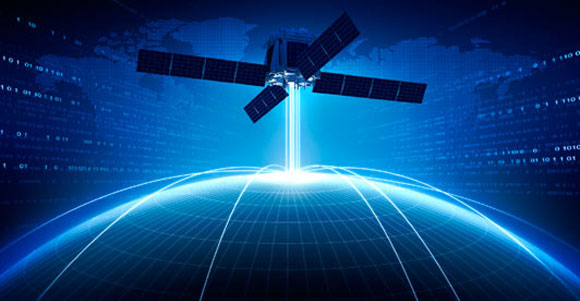
IALA B Buoy’s and Markers:
Technokontrol offers a complete line of buoys and markers which are made for durability and with the lowest possible maintenance costs. This is why our buoys are not made from steel but from plastic. Cleaning and maintenance can be performed on location without taking the buoy out of the water for sanding and repainting as this is expensive in labour and costs.
Technokontrol´s amphibious airplanes (TK-Eagle Eyes III), can reach any buoy/maker in less than 30 to 40 minutes by air and directly land next to the buoy/marker to repair, for maintenance, cleaning, re-setting, etc. Our “Eagle Eye” amphibious aeroplanes reach a cruise speed of 200-260Kmph, hence, any distance is quickly covered and with an operational range of 1,000 to 1,400 km per fuel tank any operational issues will be resolved extremely swiftly.
The three meter plastic made buoys/markers are a huge money saver on the long term. The three meter model is current because its floating body can carry the lightbing equipment, battery, solar panels, radar deflector markings and a DGPS transmitter.
How many buoys/markers we are going to need has to be established during Phase 1 of the project. However, if no sufficient signalling is available along the entire navigation track we must allocate a good proportion of any project budget for this sector.

Broadband Exploration
Technokontrol-Electronics, can also introduce for any proposal to expand the optical fibre infrastructure used by VTS with the opportunity to introduce broadband FttH, Fibre to the Home, FttF, Fibre to the Farm and FttG, Fibre for the Government network and G4 mobile services to any regions or neighbouring nations. This could result in an economic impulse and promote economic growth creating new jobs, increasing BNP and efficiency. We are convinced many operators will be interested to make use of the remaining (22) fibre tiers for broadband services and exploitation as stated before.

AVIATION-NAVAL SAFETY & SECURITY AMPHIBIOUS SERVICES:
Technokontrol recommends the use or the incorporation in any installation project of our TK-Eagle Eyes and TK-Black Night Vipers, depending on each type of projects.
The amphibious TK- Eagle Eye has the great advantage of being used anywhere, anytime and by anyone. It doesn´t require a private, military or commercial pilot’s licence to fly. It can land anywhere, on a stream, river, lake, pathway, tarmac. It only consumes 10-15 litres of normal gasoline and hace a fuel range per fuel tank of 1,000-1,400 km with two pilots.
Its technology measures including long distance, up to 6km daylight vision, arms recognition systems/technologies, night vision, thermal/infra-red cameras/heat seaking, recording systems, auto-pilot, etc.
In the field of safety and security it's is protected with level III-VII+ bullet proof undercarriage protection, aircraft parachute technology, anti-explosion fuel tanks, anti-slosh fuel tanks for greater stability, low maintenance programmes,(24/7/365 days) Emergency Call centre, etc.
The TK-Eagle Eye has the great benefit to be able to fly as slow/stall speed of 70kmph up to cruising speeds of 200-260kmph and having the advantage being able to land next to a damaged “buoy/marker/sub-station” and repairing/cleaning/maintaining it, to even stopping, patrolling, controlling vessels and requesting shipping documentation, doing water and land based inspections, in-situ custom activities or doing law enforcement/assets protection/environmental protection duties or even transport/delivery activities for equipment or employees and not forgetting Search & Rescue activities.
Being able to land on firm land as an estate/farm a 100km away and also being able to land inside a forest opening or even assisting engineers for aerial-naval inspection routes hourly or daily and reducing travel times between the "Command Centre/HQ" to any of the stations, sub-stations, shore stations easily under an hour to the furthest outposts as they should be based in several different sections of any coastal or river projects having this aero-naval instrument is and will be a great advantage for the project and for the client as it will only make everything much easier, more efficient and to which we include full pilot, maintenance training in Europe and then in the final location.
The maintenance costs of the TK-Eagle Eye amphibious aircraft including fuel per hour shouldn´t normally exceed approx. 20-35 USD per operational flying hour, while the smallest helicopter, as for an example the Robinson R-22, R44, even with floats to land on water have a hourly flying fuel and maintenance costs of approx. 400-500 USD per operational flying hour. Hence, our “TK-Eagle Eyes” being a much more financially viable option than anything similar in the market and no one has aerial-naval technologies applications and versions of “TK-Eagle Eyes” with more than ten versions at present each with its main and general applications and usage.
We also have a "Special high speed surveillance aircraft", the "ALIEN BLACK NIGHT VIPER AIRCRAFT" which needs to be only flown by experienced and well trained pilots. We can offer long range diesel engines to have an operational range of 3,000-4,000km per flight at over 300kmph+, a petrol engine version with flying speeds of over 400kmph+ and a jet engine version which can break the 500+kmph and even breaking the 10G+/-5G, extreme acrobatic or military usage as a small jet fighter, trainer or high speed surveillance jet.
Please view a presentation video of the "Eagle Eye III" in action/flight
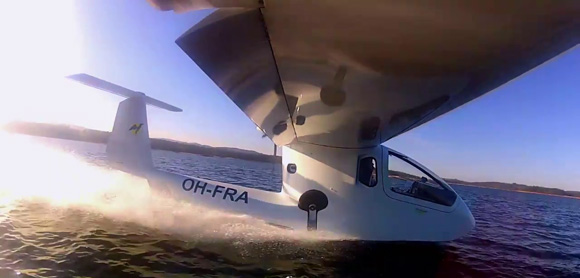
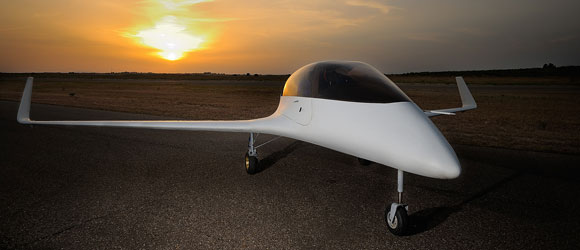
NAVAL-WATERWAYS SAFETY & SECURITY VESSELS SERVICES
TechnoKontrol-Maritime/Military can incorporate into any technological, surveillance, Armed Forces, private security contractor or corporation one or several of our unique, designed, patented "TK-king Shark Vessels", from the Series I to the XIV, which are most in the 14-30metres length range and high speed motors over 700bhp+, multi-use vessels which have the possibility to carry, use, transport from TK-Eagle Eyes Aircraft to re-fuelling, radar, telecommunication, missile launchers, environmental research & protection studies, mini-submarines,etc.
In any long term project we recommend the incorporation of several of these operational "TK-King Shark Vessels", from fire-fighting vessels, patrol vessels, to technical-logistical vessels to increase the speed and execution of the project installation and also to continue and to follow up and guarantee and/or continue any maintenance programme with any "AIS/VTS" project installations.
Please view our King Shark's video




Technokontrol © Copyright. All Rights Reserved. All Designs & Applied Technologies Patented
Technokontrol - AIS Infrastructure Base Stations
Technokontrol is your perfect partner for the or any partial or full installation of AIS shore, river fronts, sub-stations, station, "Command Centers" infrastructures. Our corporation is specialised in the setup of masts with AIS shore equipment. The company is able to build the complete mast or to mount the equipment in existing masts of third parties. Several types of antennas can be used like omnidirectional and directional. The Radio Transmitter part is mounted in separate racks which can be indoor or outdoor. Several types or racks can be installed as you can read further on.

The "AIS" technologies are not only used for Tracking and Tracing purposes. It can also be used to transmit other types of information from shore to navigating vessels. The DGNSS corrections are one of these possibilities. Thanks to a reference station that will measure the differences between the real position and the signal received, a standardised correction message is generated and transmitted to the AIS Base station located in the neighbourhood of the reference station. Then, the message is broadcasted and received by all the vessels equipped with an AIS transponder.

Depending on the length of the waterway, one or more reference stations might be necessary to provide a good correction. The stations can be connected to the central monitoring system to follow their working status and the quality of the correction sent to the fairway users.


Network Infrastructure
Technokontrol can deliver key solutions for central hardware which can be used in rivers, ports, docks, river/maritime routes/vias, canals, land-locked seas, lakes, dams, for all types of Data and Information Services.
Technokontrol Global Engineering has the know-how, experience, technologies, own designs teams and technicians/engineers to install a central server infrastructure for any size project at global level. Technokontrol is ISO 9001/14000/18000 and all of our installations and services are insured by AXA Group. Different types of databases, systems , technologies can be installed, adapted, up-graded as well on already operational separate infrastructures or can be configured in an already existing IT environment.
For the display of RIS information Technokontrol can supply and install wall mount screens, command centres, mobile data viewing services for ipdas, mobile services in many different setup and combinations. Typical workstation can be installed in the field and centrally maintained and supervised.

The monitoring of AIS and IT networks is possible via the specific configuration of the Nagios monitoring tool. Based on predefined and requested SNMP traps the actual stations of the various functions of the RIS network can be monitored. Examples of these are: status of UPS and batteries, status of air conditioning and climate control, status of AIS transmitter, SWR errors, transmitting errors, status of routers and switches, status of power, status of DGPS monitoring, etc. A graphical overview and logical diagrams of the components are available. The necessary alerts via E-mail and/or SMS can be set for a follow up of the actual network status.







IALA DGPS system
Technokontrol has in depth experience, know how in the design, manufacturing, installation and setup of any IALA DGPS systems. IALA DGPS is used on many global rivers/routes and by many maritime vessels to enhance their operational, safety, prevention standards via GPS signals. this technology a location accuracy from the nominal 10m-15m to less than 1m to 50cm. To integrate these corrections, a vessel needs an IALA Beacon receiver on board.
IA ground-based reference station is installed to broadcast the difference between the positions indicated by the GPS system and the known fixed position. The IALA DGPS network can be composed by one or more base station depending on the area to be covered. The corrections are broadcasted using long wave radio frequencies. The reference station can be connected to a central system to monitor its working status and the corrections sent. Thus using logistically located stations, sub-stations, shore stations along the whole operational network.


Technokontrol types of IT racks:
A. Standard AIS Base Station (Indoor)

A standard AIS Base Station comprises the following components:
- Base Station Transponder
- Base Station Controller
- Base Station antenna(s)
- Uninterruptible Power Supply (UPS)
- All necessary cables and mounting accessories
- Mounting rack for Base Station components
- Network connection (to the shore network)
B. Standard AIS Base Station with DGPS Reference (Indoor)

An AIS Base Station with DGPS reference comprises the following components:
- Base Station Transponder
- Base Station Controller
- Base Station antenna(s)
- Uninterruptible Power Supply (UPS)
- All necessary cables and mounting accessories
- Mounting rack for Base Station components
- Network connection (to the shore network)
- DGPS Reference Station
- DGPS Monitoring Station
C. Outdoor AIS Base Station Including Doubled Base Station

Connection (to the shore network) outdoor AIS Base Station with DGPS
Network connection (to the shore network) outdoor AIS Base Station with DGPS reference comprises the following components:
- 2 x Base Station Transponder
- 2 x Base Station Controller
- Base Station antenna(s)
- Uninterruptible Power Supply (UPS)
- All necessary cables and mounting accessories
- Mounting rack for Base Station components
- Network connection (to the shore network)
Technokontrol Certificates & Associations
Technokontrol Manufactures, Designs & Researches our safety products in the European Union at the highest possible International Accident,Health & Safety standards.
TechnoKontrol is a member of the NFPA
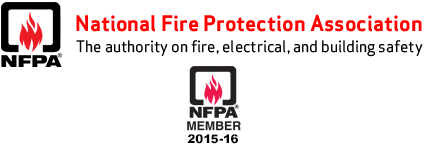
TechnoKontrol Products are ATEX Compliant
(European Antiexplosive Safety Directives)

Technokontrol's Products & Services are insured by

Certificates



































Página disponible en español.
TechnoKontrol Aviation Videos
- Eagle Eye II Amphibious Low Level Ground Flight & Water Base Landings
- Jet Engines Video
- TK Eagle Eye III & IV
- TK Aviation Civil Use
- TK Aviation Law Enforcement
- Refueling on fire
- Liquids balance
- Technical video
- Aircraft Fire Fuel Tank Test - Prueba de ignición en tanque de combustible de un aeroplano
- TK Outdoor Tests Presentation - Fire Services / KNPC Kuwait
- Security Test (SPA) - Prueba de Seguridad
- Heat Conductivity of TK Alloys - Conductividad térmica de malla TK
- Types of TK Alloy Formats - Formatos de presentación de malla TK
Aviation & Airports Protection
Products
What is B.L.E.V.E. explosion?
TechnoKontrol Wikipedia

TechnoKontrol: 1st in Spain for own Technology patents 2013 & 2014

- Ministerio de Industria Turismo y Comercio-OEPM
Technokontrol, the number 1 corporation in Spain filing for its own technology patents, trademarks and utility patents (SPA) - OEPM 2013 The year in numbers (SPA)
TechnoKontrol has been fully verified and certified by Bureau Veritas
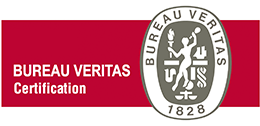
Certificates
- ISO 9001 - ES108784-1
- ISO 14001 - ES108782-1
- ISO 45001 - ES108783-1
- ISO 4126
- ISO 28000
- ISO 37000
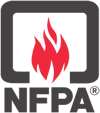
NFPA-National Fire Protection Association
NFPA-Asociación Nacional de Protección contra el fuego
TechnoKontrol is a member of the NFPA
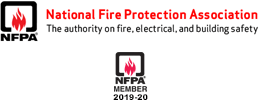
NFPA 69: Standard on Explosion Prevention Systems, 2016 Edition
Prevent deflagration explosions due to combustible dust particles, gases or vapors with NFPA 69. Combustible dust, gases and vapors produced in industrial settings can pose a significant safety hazard.NFPA 69: Standard on Explosion Prevention Systems offers definitive guidance on explosion protection and prevention systems.
ATEX - European Antiexplosive Safety Directives

- ATEX Guide: Protection in explosive atmospheres
- ATEX-EU/HAZLOZ-USA/NFPA-USA/DSEAR-UK/Explosion Directives TechnoKontrol Additional Anti-Explosion Data
- ATEX Directive in EU Directives
Dangerous Substances and Explosive Atmospheres Regulations - United Kingdom/ATEX

United Nations Economic Commission for Europe - UNECE - TechnoKontrol

- TechnoKontrol information for the UNECE BLEVE working group
Proposal transmitted by the governments of Spain and France
The European Parliament and The Council

Technokontrol's Products & Services are insured by

Dossiers TK Group of Companies
TK-Global Engineering - Where efficiency and reliability become a reality


World Vessel Traffic Services Guidelines
- Worldvtsguide.org
- IALA. International Assosciation of Marine Aids to Navigation and Lighthouse Authorities
- Sattelite communications services
- Ship/Vessels Global Insurance Policies
Port authorities manuals & operational guidelines
- IALA VTS Manual
- Guidelines for the Accreditation of VTS Institutes
- Designing and Implementing Simulation in VTS Training
- The Assesment of Training Requirements
- Vessel Traffic Services Operator Basic Training
- The Aspects of the Training of VTS Personnel Relevant to the Introduction of Automatic Identification System
- Basic Training
- VTS Supervisor
- On-the-Job Training - VTS Operator - VTS Supervisor
- On-the-Job Training - Instructor
- Recommendation on Standards for Training and Certification of VTS Personnel
BP World Report
Static Electricity Dangers and Protection
- Static Electric Discharge Hazard On Bulk Oil Tank Vessels
- Static Electricity - ISGINTT
- Dangers of static electricity and protection in aviation
- Static Electricity - IAPA
- U.S. Chemical Safety and Hazard Investigation Board
US Department of Transport
USA Chemical Safety Board
An independent federal agency investigating chemical accidents to protect workers, the public, and the environment.
About the CSB
CSB Safety Videos
- Chevron Richmond Refinery Explosion
- Deadly Contact
- West, Texas Real Live Blast Damage Video
- Hot Work - Dupont Explosion
- Static Sparks Explosion in Kansas
- Danger of Flammable Gas Accumulation
Articles
- Energy Sector Vulnerabilities: Petroleum (Spanish)
Ships Collissions
- Luxury Yacht catches Fire
- Explosion on a tanker ship
- MISC ship explosion at Petronas methanol Labuan
- MT Prem Dyvia explosion
- Destroyed in seconds-oil tanker explosion
- Oil tanker explosion during loading
- Bunga Alpinia on fire
- Kapal Tanker Bunga Alpinia MISC Meletup/Terbakar Di Labuan
- MT Bunga Alpinia Fire
- Ship Fire Fighting
- Ship Fire
- MV Stolt Valor
- Chemical Tanker Explosion
- Ship Hits Bridge
- Emma Maersk on Fire - World's Largest Container Ship
- Collision at Sea
- Gibraltar storm causes ship collision - Part I
- Gibraltar storm causes ship collision - Part II
- Ship collision: "Grand Rodosi" crushes "Apollo S"
- Crash of two big ships inside the sea
- Container ship collision during manoeuvre in port
- Collision 2 sea ships on river crossing in Holland
- Ship sinks after collision
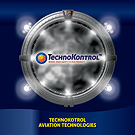
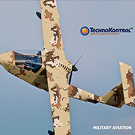
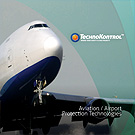
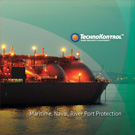
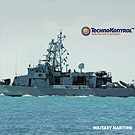
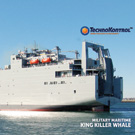
 Safety Products System
Safety Products System Eco-Energy Power Plants
Eco-Energy Power Plants TK Aviation
TK Aviation Environmental Industries
Environmental Industries Mining
Mining Petroleum Industry
Petroleum Industry Industrial Projects
Industrial Projects Maritime Industry
Maritime Industry Military Vehicles
Military Vehicles Transportation & Auto
Transportation & Auto Construction Industry
Construction Industry Global Food Industry
Global Food Industry Electronic Safety Systems
Electronic Safety Systems Housing Projects
Housing Projects